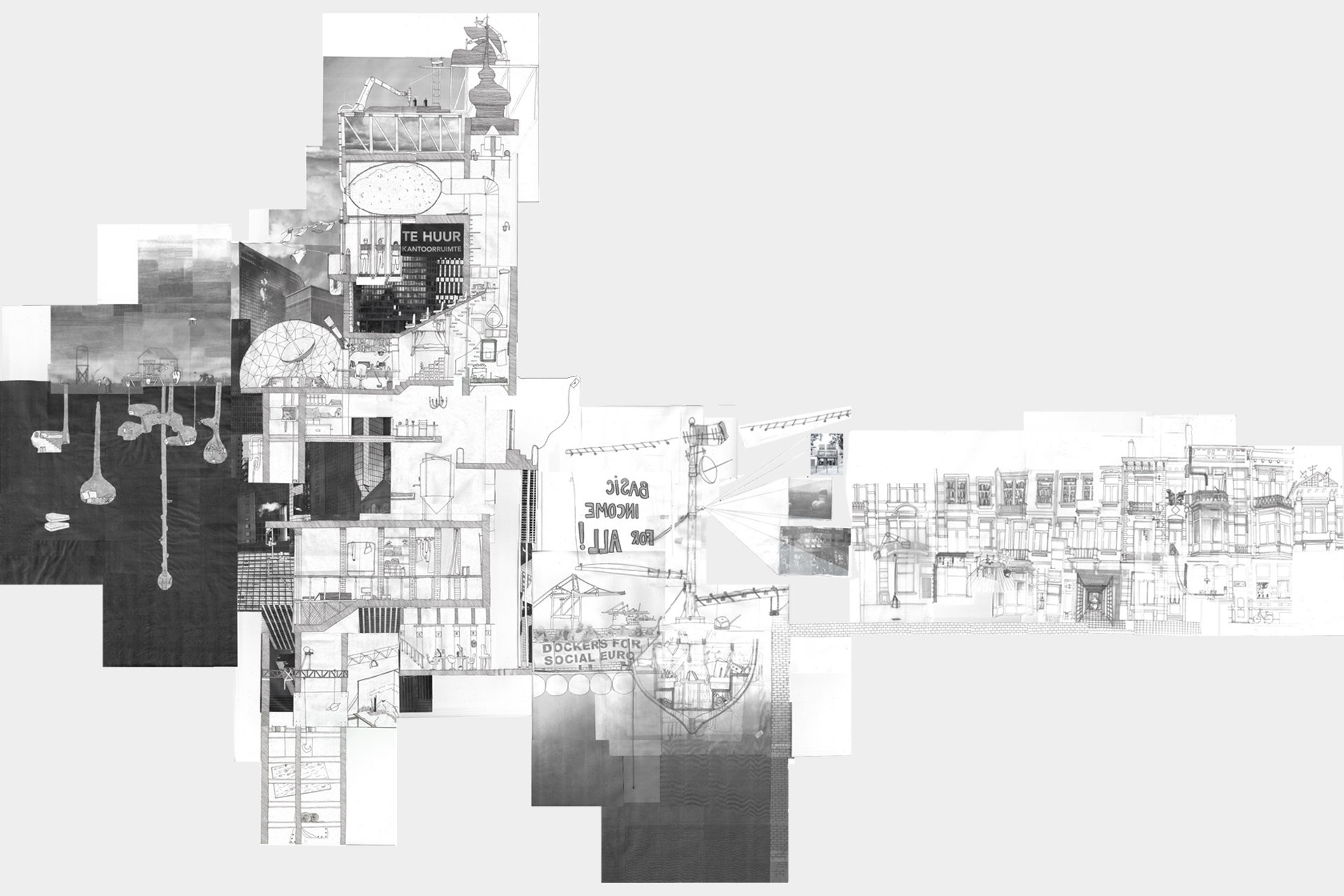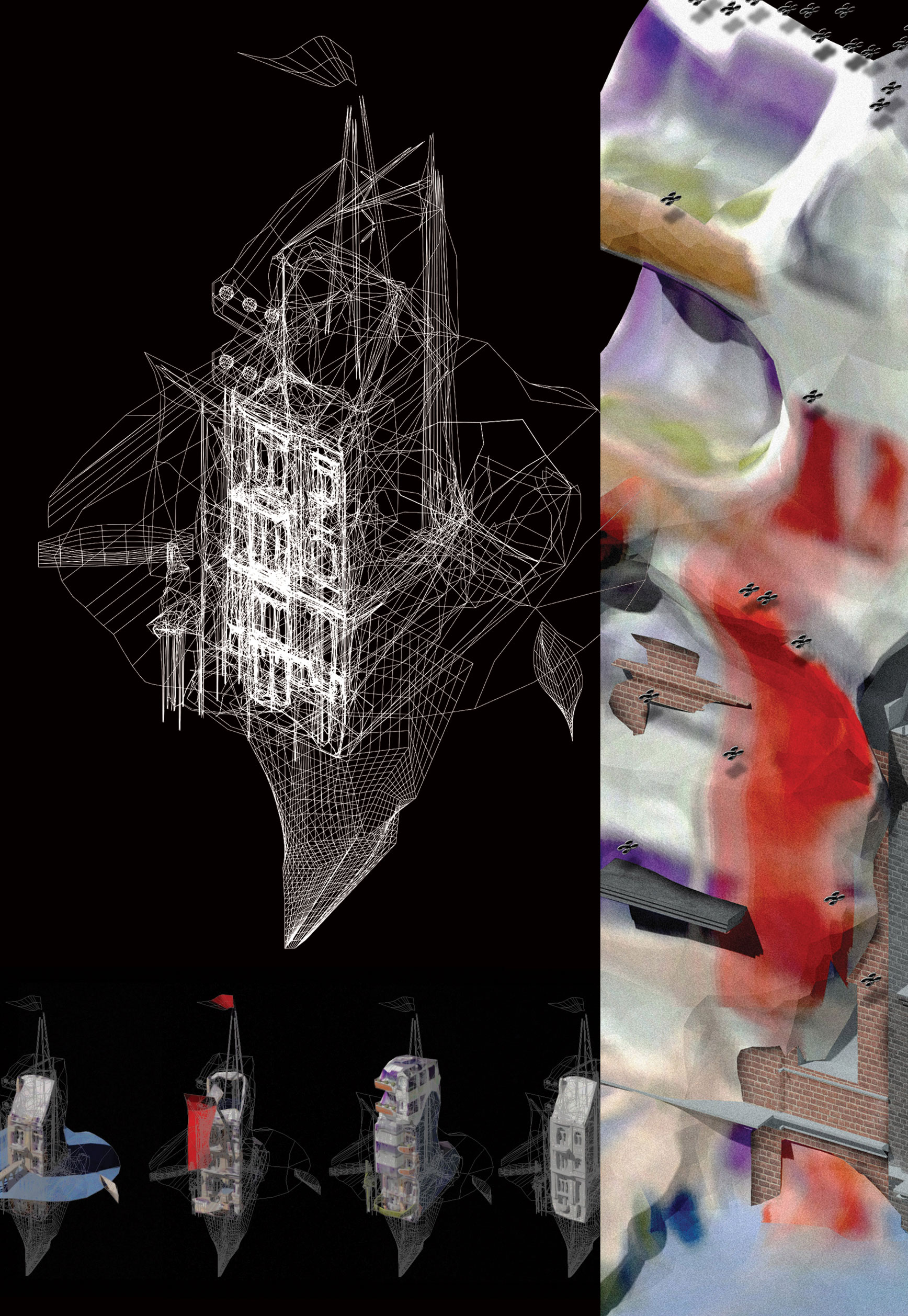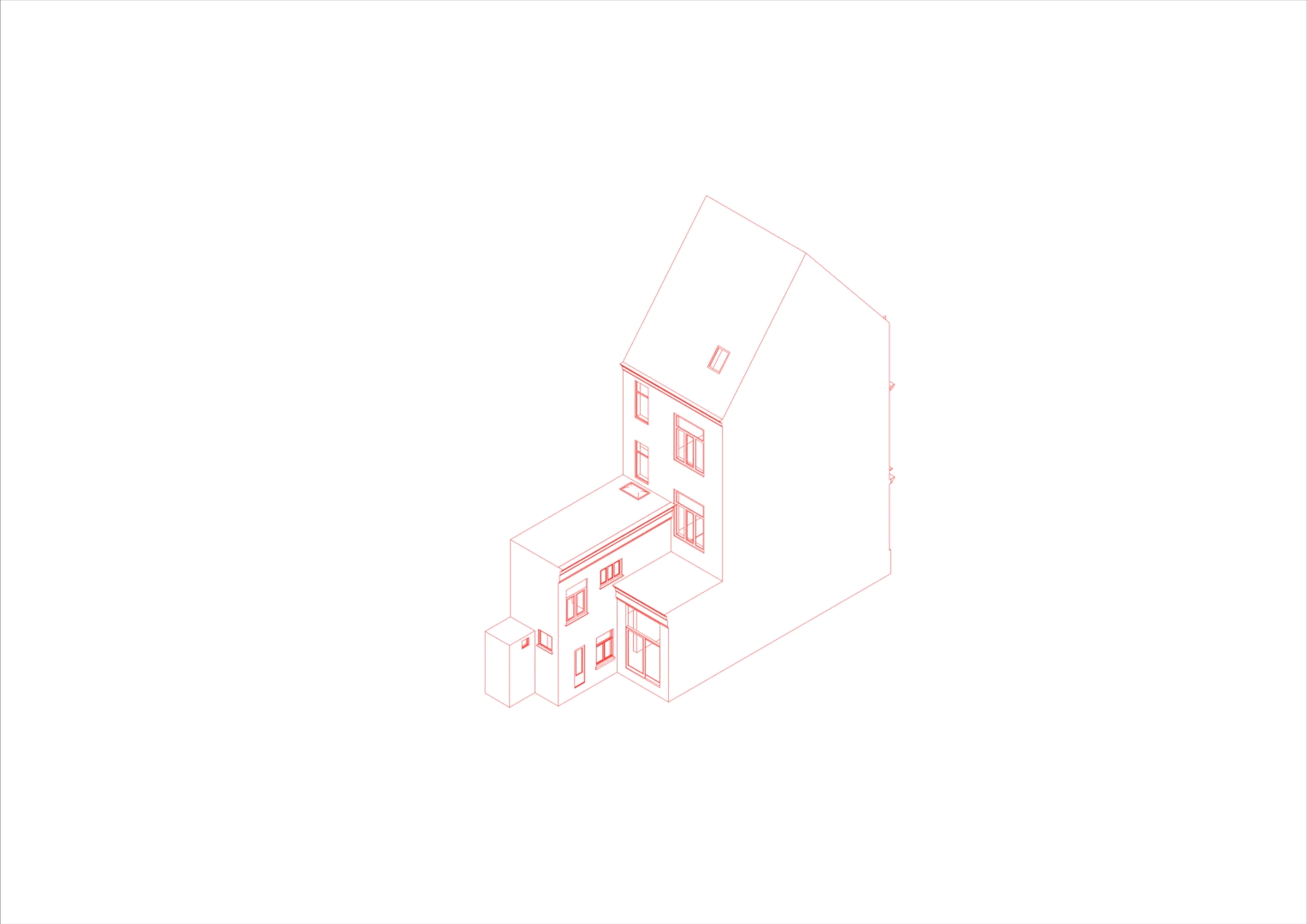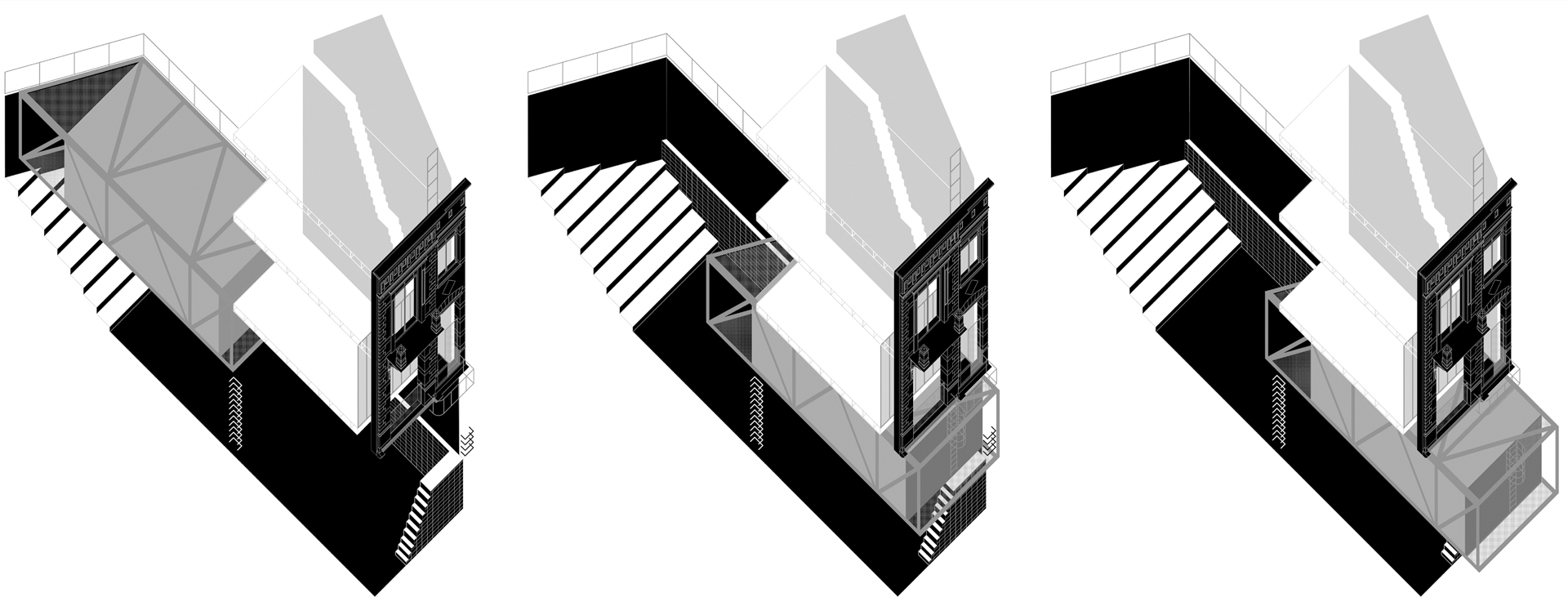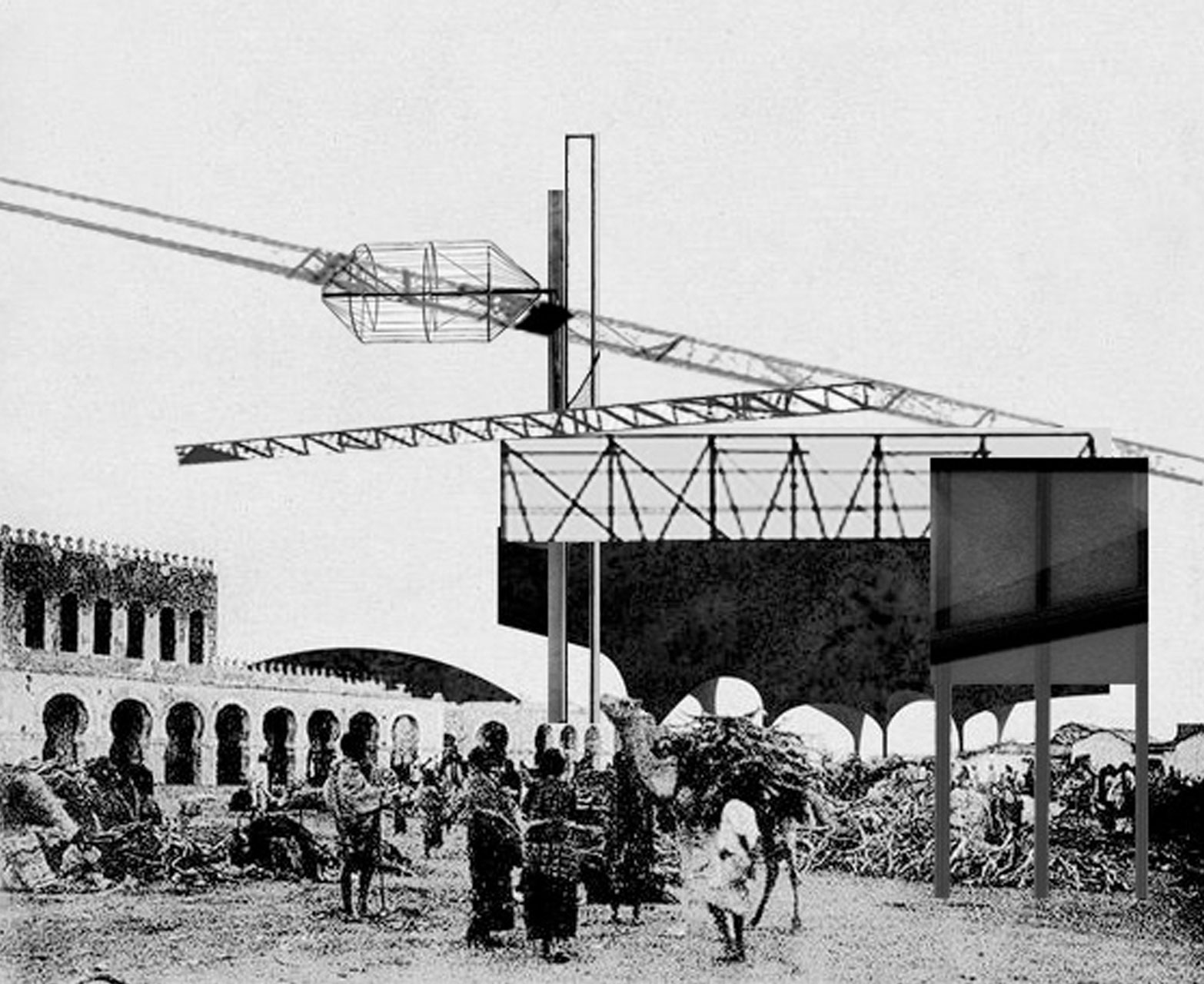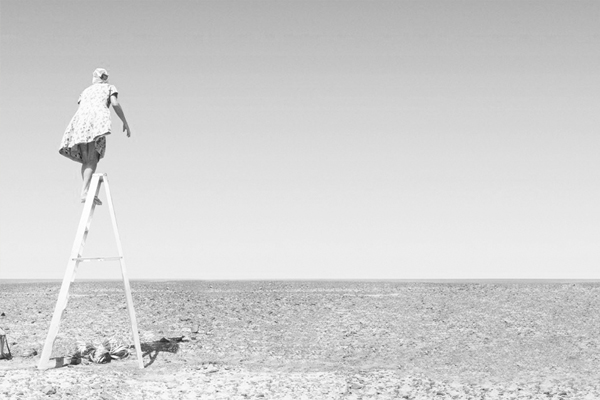
Teufelsberg, an artificial hill constructed from the rubble of Berlin after the second world war, on the site of the Nazi military-technical school designed by Albert Speer. The hill is the highest point in Berlin and surroundings, the American and British forces constructed a spy station on this strategic location. The station was operated by the NSA during the cold war from 1961 till 1992. Its large installations and radar domes were operated 24h a day, spying on military and radio communication from East Berlin, Russia and the nations within the Warsaw pact.
After the reunification of Germany there have been several projects and speculations for the site, ranging from a museum to luxury housing, none of which has been brought to completion. During years of vacancy, decay and vandalism, the site has been used for various activities, and currently hosts a number of initiatives. Artists, researchers and squatters are living there and the site attracts large crowds of tourists.The site hosts Field Stations eV, a non-profit organisation, that explores new models for developing architecture and its relationship with the environment at large.
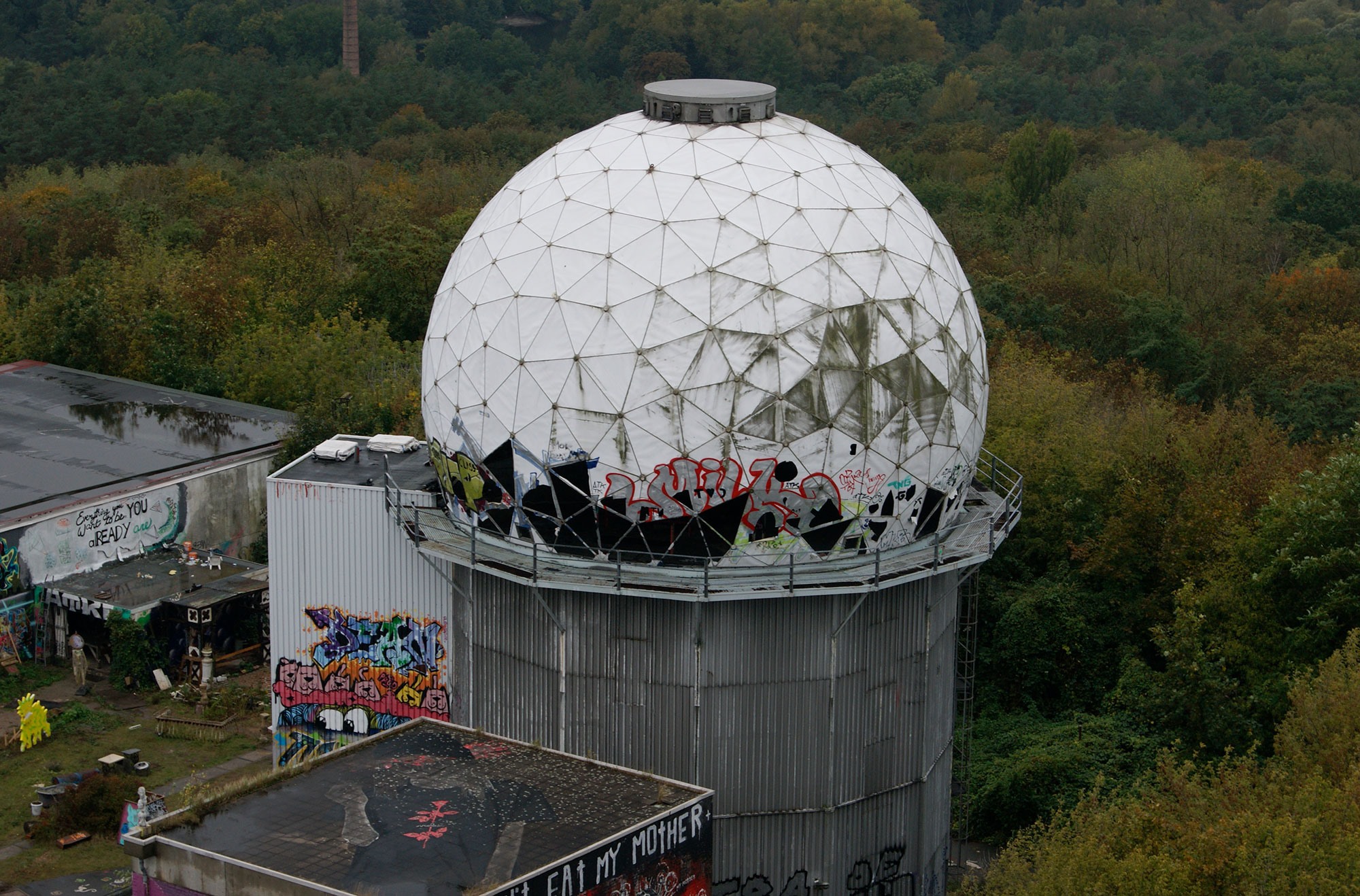
As the buildings on Teufelsberg and its layered history demonstrate, architecture cannot be reduced to just its constellation of material elements and is subject to environmental, technological and cultural changes. The built reality is only one layer that makes up the environments we inhabit, it is embedded within other material and immaterial layers, and it contributes to larger economic, material, environmental, informational and infrastructural systems. Within the Field Station Studio, we see the expanded field, this constantly changing, layered and hybrid environment as the context that architecture operates in and actively engages with.
The question of how architecture operates and relates to the expanded field is central to the studio. Three closely related evolutions give this question an immediate urgency:
(1)The evidence of the impact of humans on our planet is so extensive, that scientists are proposing the dawn of the Anthropocene as a new geological epoch. While architecture and urbanisation are major contributors to this impact, our way of thinking about and practicing architecture is modelled on a difference between nature and culture which can no longer be maintained.
(2) Our environment is increasingly saturated by and mediated through technologies. Through sensors, mobile technology, big data, online platforms, augmented reality, ... technology is interwoven into the built fabric of our cities. Our culture is increasingly mediated through digital media: online blogs and social media providing a nonstop stream of information. Although this added layer of technologies, or technosphere, has as a drastic spatial and material impact, architecture seems to lack the tools of engaging with these spatial agencies.
(3) Internet, social media, mobile technologies offer access to information everywhere and have the potential to change the way we act as a collective.This can be seen in informal actions like crowdfunding, crowdsourcing, mass customisation. Architecture can learn from these actions.
As a consequence of these points, the dichotomies that are at the basis of architecture as a discipline are collapsing: there is no clear distinction anymore between nature and culture, between environment and building, between interior and exterior, between digital and material, between mediated and bodily experience. Within Field Station Studio, we see this layered, hybrid and technologically saturated environment as context, content and medium for architecture. These issues have the potential to rethink, expand and hack our modes of operation as architects and the way we design embedded in this expanded field.
PARTICIPATING STUDENTS
Aaron Derie, Nicolas De Paepe, Ramona Georgieva, Kevin Saey, Vincent Nulens, Younes Ben Amar, Lieselot Lust, Marine Boey, Tom Schoonjans, Maarten De Smet, Eliza De Meyer, Tsvetan Karamochev, Shervin Sheikh Rezaei, Stijn Colon, Marie Malingreau
PART I:FIELD GUIDES
Starting from a study trip to Field Station Berlin and reading, presenting and discussing examples and theoretical texts, the aim of the first part was to collectively identify, map and categorise potential layers that make up the expanded field for architecture. In groups of three, students developed a concept for a Field Station. Following questions could help in driving this process: Which layer(s) of the expanded field does the Field Station relate to? How does it relate to other Field Stations? How does this field affect the architectural articulation of the station(s)? Which architectural parameters are influencing and defining the relationship between station and field? How does the field station relate to time? Which architectural strategies are employed?
The design is iteratively developed and results in contextless proposals, in the form of a series of prototypes for (a) Field Station(s).The assignment leads to catalogue of prototypes. Their format, scale, the media used and nature of the output, will depend on the content of the project.
Open Source Architecture.
Communicating Architecture.
A Speculative Future without Work.
Field Station Google Earth: de Nieuwe Wereld.
PART II:SELECTED WORKS
A WORLD WITHOUT WORK - MARINE BOEY
Around the year 2000 we have come at a point where production and employment no longer follow the same curve. We, human workers, are loosing the race against the machine, that’s why in our everyday lives we often unfairly fear technologies instead of the system by which it is used. Until today the majority of the population works to live and it is often our job that keeps us occupied, day after day, and offers an income to be able to buy ourselves anidentity, to feed the spectacle we live in. So what happens, once you take away work?
In a speculative future of a world without work, how does our understanding of architecture change once we see it as aplatform for human development, rather than an investment for the wealthy?
FIELD STATION GOOGLE EARTH - STIJN COLON
“Every possible future for S14, happening at once”
De Stanleystraat 14 te Antwerpen, geplaatst in een wereld waarin een overclockte Google Earth de wereld domineert.S14, gekend voor zijn tegendraadse neigingen, voorziet een alternatieve simulatie, Naast S14-Anarcha zijn er nog duizende alternatieve Earths die telkens op hun ma¬nier een vervolg voor de aarde dicteren. Duizend-en-één toekomsten, allemaal op hetzelfde moment. Drones die voorheen enkel registreerden worden omgebouwd tot vliegende 3d printers die tevergeefs trachten de “thin layer of data” te vertalen naar een fysieke bouwlaag.
De simulatie en het narratief wordt hierin een metafoor voor de duizenden virtue¬le werelden die de realiteit rondom ons bepalen. In deze absurde speculatie wordt verder de grens bespeeld tussen registratie en creatie, virtueel en fysiek. Wat als de rollen nu eens omgedraaid zouden zijn? Dit speculatief project is daarnaast ook nog eens gedrenkt in een nodige dosis pseudowetenschap die het schijnbaar onmogelijke mogelijk maakt.
OPEN MATERIAL DATABASE - NICOLAS DE PAEPE
The design project looks into what open source might mean for architectural design and construction practices. Open source architecture is a widely discussed topic, there are a number of existing systems (open structures, wikihouse, open-source architecture network), each comes with its presumptions of what it might be and how it would work.
Most of these initiatives rely on a kit-of-parts, often defined by conventions, such as fixed grids and specific ways of producing and connecting parts. This limits the application of open source architecture to those who are acquainted with the idea and are capable of producing new parts. Alternatively, this project proposes looking at what’s already there, for building materials, components and parts that readily available. The proposal consists of a database of self-sourced and self-produced parts, from heterogeneous sources.
Though the adoption of such a system architecture can become a d.i.y, open source and bottom-p platform. S14’s hackers community is already investigating this idea by striving for digital anatomy and what kind of implication this might have on architecture. The typology of a house is questioned by seeing it as a collective form of living instead of a private one. In this case, the house can be used as a framework that can be alternated by the people using it. You don’t have to live somewhere to be able to do an intervention of some sort.
When a framework evolves to one that is constantly changing, we achieve a superstructure. Alternations by the users within can be attained by setting up a complementary material network which open sources all available (building) parts and the knowledge on how to use them. This way, different systems emerge within the superstructure, defined by the parts they are made of. These also define the temporariness of the built system. When different systems in the superstructure evolve, there will be a shift of function. Because of this, temporary operations will become permanent where needed or will be abandoned and vanish over time.
In the near future this structure could evolve into a network that exceeds one house. The pursuit of digital anatomy results in an architectural anatomy where people aren’t homeowners but actually are digital nomads stationed in the field where they are needed and/or belong.
BEYOND CONTROL - TOM SCHOONJANS
Dit voorstel voor S14 is het rechtstreeks resultaat van er als groep ontvangen te worden. Daaruit bleek naast het semi-publieke karakter van de hackbase een engagement voor een publiekere werking, waar meer mensen in betrokken kunnen worden dan de gebruikers van de hackbase zelf. Aansluitend bij het vooronderzoek eerder dit semester, waarin ik pleitte voor een publieke ruimte die zich zowel digitaal als fysiek manifesteert, is dit een ontwerp voor een ware fysiek publieke manifestatie van S14. In het kader van verdere -materiële- onafhankelijkheid van de hackbase verzamelen alle S14-functies in de kelder en gelijkvloers zich tot boven het maaiveld in een volume losgekoppeld van de private woonvertrekken. Door het volume langs één as mobiel te maken betekenen verschillende posities op deze as, in combinatie met de rigide structuur erboven en -onder, verschillende fases van publiek-private en fysiek-digitale ruimte.
S14 faciliteert maar neemt afstand van deze ruimtes. Ze zijn geen platform voor S14 maar voor publieke noden. Zowel een virtueel, publiek netwerk die de positie op de as bepaalt als de architectuur kijken hierop toe. De verschillende fases van het volume hebben ruimtelijke consequenties voor het functioneren van S14. De circulatie en toegang rond het volume is volledig afhankelijk van de positie ervan op de as, waardoor S14 in de verschillende fases ook verschillende beperkingen van de werking ondergaat. In extreme gevallen kan de werking volledig geblokkeerd worden in functie van een zo publiek mogelijke fase. De ruimte in het volume valt wel volledig onder de controle van S14, en is voorzien op het compenseren van de fases. S14 als totale ruimtelijke compromisvorming tussen de eigen werking, het publiek platform en de aanwezigheid van S14 op het platform.
AWARENESS STATION - SHERVIN SHEIKH REZAEI
We liggen als mens aan de voeten van de technologie. We krijgen steeds meer en meer vertrouwen in het virtuele, meer dan in onze eigen medemens. De technologie neemt over. Zo ver, dat we zelfs in staat zijn om de zichtbare fouten in de online systemen over te nemen naar de werkelijkheid waarin wij leven. Dit is het gevolg van de vervaging tussen de fysieke, echte wereld en de virtuele wereld. We gaan onszelf niet meer controleren en gaan ervan uit dat iedere bron die we raadplegen het juiste antwoord biedt.
Vandaar ben ik gaan zoeken naar een station die ons een zo juist mogelijk antwoord kan geven. Een station voor de mens van vandaag, die niet veel tijd meer heeft voor opzoek werk, maar toch nog op de hoogte wil blijven. De station heeft als functie de mens bewust te maken van wat er in de wereld rond hem gebeurt en heeft als doel de passant up to date te houden. Wat kunnen we als juist beschouwen en wat moeten we als onjuist zien? Met dit station proberen we allemaal te zoeken naar een juistere waarheid. Dit is natuurlijk enkel mogelijk wanneer we vanuit verschillende perspectieven informatie gaan sprokkelen. We moeten proberen zo open mogelijk te staan voor andere manieren van denken en werken. Daarom stelt dit station zich open voor meningen en informatie vanuit verschillende invalshoeken op onze wereld. Dit zorgt er ook wel voor dat het als een station kan gezien worden van vrije meningsuiting.
Per gemeenschap wordt er een, telkens verschillend, station geplaatst. Dit zorgt ervoor dat er mensen vanuit verschillede groepen over de hele wereld de mogelijkheid hebben om in te pluggen op het station en hun informatie te delen met anderen. De stations zijn herkenbaar aan hun autonome en statische vorm. Ze worden gezien als landmark binnen de steden. De hoogtes van de stations vormen een stedelijk dak dat als het ware fysieke communicatie uitstraalt -door de bewegende beelden, projecties, licht, geluiden... De architectuur straalt iets uit dat effect heeft op het sociaal gedrag van de mens, zoals ‘een social condensor ’.
Men kan nieuwe informatie in het systeem steken, maar tegelijkertijd mag men ook inspelen op anderen hun informatie door hier en daar iets aan te passen. Niks gaat verloren, alles blijft opgeslagen in een online archief (/database). Het werkt zoals een online forum, maar dan omgezet naar de fysieke wereld. Hier is de sociale media ook minder gestuurd door hogeren, omdat we ook informatie te weten komen die we normaal gezien niet zo expliciet te weten zullen komen en omdat de gewone bevolking in handen heeft wat geprojecteerd wordt. Het is een zeer commune ge27
bonden station, die er voor moet zorgen dat er genoeg interactie is tussen de mensen onder elkaar zowel fysiek als virtueel.
Het idee is begonnen vanuit een analoog station en een digitaal station. In het analoge station probeerde ik de nieuwe media en actua te vangen in een analoog model. Een analoge toren op het concept van internet. Bij het digitaal station heb ik geprobeerd het idee van de typische klassieke media te vangen in een digitaal gebeuren, waar je technologie nodig hebt om de technolgie te begrijpen. Uiteindelijk heb ik die twee stations doen versmelten met elkaar en zo kwam ik aan een hybride van heel veel communicerende architectuur.
Niet alle informatie is zomaar leesbaar, sommige berichten worden geëncodeerd. Vandaar heb je voor de digitale informatie een app nodig die werkt door het inscannen van QR-codes onderaan links van de schermen. Die app werkt alleen maar binnen een bepaalde straal rond het station. Dit toont dat het niet de bedoeling is dat dit station de virtuele wereld gaat uitschakelen, maar het houdt wel die wereld binnen beperkte grenzen. Er is ook informatie analoog weergegeven, die is dus ook zichtbaar zonder gebruik van een device. De station probeert de digitale functies om te zetten naar de werkelijke wereld en op die manier wordt de virtuele wereld deels uit zijn privésfeer gehaald.
Downloads
FieldStation1617_HackingExpandedFields_Brief.
FieldStation1617_HackingExpandedFields_Projects.


